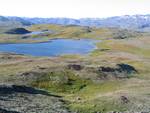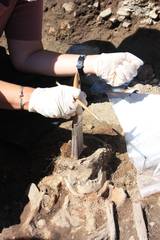Resources, Mobility and Cultural Identity in Norse Greenland
Focus will be on the interaction between humans (action), systems (structures) and environment with humans as actors. Identity, mobility, communication and human strategies are key concepts for the understanding of the development of the Norse Greenland society. Rather than focusing on the last period of settlement, the intentions of the project are to explain the development from landnám to depopulation within the three-phase model: Landnám – expansion – decline. The social and economic strategies will be evaluated in relation to the subsistence economic – exploitation of local resources – and products for long distance trade and luxury goods, and implicit, the interaction between humans and the changing environment.
Coordinator: Jette Arneborg
Other participants:
Stud.mag Christian Koch Madsen, National Museum and Archeology, University of Copenhagen (landscape and economy).
Konrad Smiarowski, Ph.D. Program in Archeology, Department of Anthropology, CUNY Graduate School and University Center (animal bones and economics) Stud.mag Poul B. Heide. Medieval Archeology, University of Aarhus (Landscape and communications)
Researcher Martin Hebsgaard, University of Edinburgh (aDNA).
Professor Niels Lynnerup, Institute of Forensic Medicine, University of Copenhagen (Physical and biological Anthropology, genetics)
Andrew Casely, University of Edinburgh. (Agent based modeling)
Partners:
The project forms part of a the NABO-project:
North Atlantic Human Ecodynamics.
About the project, see: www.nabohome.org
Keywords:
Norse, Vatnahverfi, resources, mobility, identity, climate change, social and economic strategies.
The project is running from 2009 until 2013



